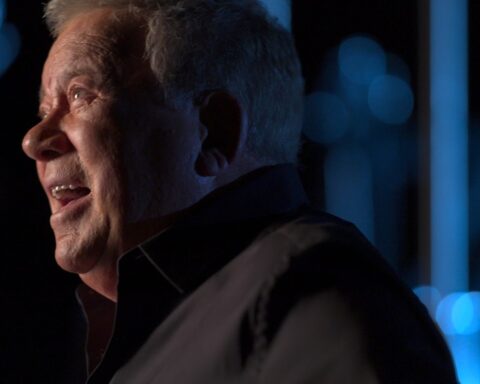The Kingdom of Dreams and Madness
(Japan, 118 min.)
Dir. Mami Sunada
Programme: TIFF Docs (North American Premiere)
“Filmmaking is suffering,” muses legendary director Hayao Miyazaki to director Mami Sunada in The Kingdom of Dreams and Madness. The film offers a revealing glimpse as Miyazaki completes production on his final feature film, The Wind Rises and his peers at Studio Ghibli produce The Tales of Princess Kaguya, the latter of which also screens at the Toronto International Film Festival this year. Production on The Wind Rises takes a visible strain on Miyazaki as his demands for perfection, not to mention the investment of his own personal history into the story, sees this long drawn-out finale of his career culminate in what many critics consider his finest work. Sunada captures Miyazaki shedding more than one tear while seeing his finale work appear on screen and, by the end of the film, one appreciates the effort that merits such tears.
This behind-the-scenes doc portrays Studio Ghibli as a Miyazakian kingdom where imagination, chaos, and perfection all live in harmony. Expect to be in awe of the filmmaking process as the imaginative world of Miyazaki evolves onscreen. The wise Miyazaki, clearly aware of the reputation he wields for his iconic animation, plays like a wily character in one of his own films as he playfully dispenses wisdom and charm for the camera. The animation master reflects on his life and career with complete openness and humour, for he mixes helpful insights into the creative process with self-deprecating humour that elusively acknowledges the animated empire he and his collaborators have built.
While Sunada does little more than observe the machinery of Studio Ghibli and offer some dips into Miyazaki’s biography, her glimpse into the filmmaking process makes The Kingdom of Dreams and Madness remarkable. Sunada clearly has a fondness for Miyazaki’s craft, as an early scene of the film lets the camera take in a handwritten note from the director expressing her admiration of Miyazaki and requesting his permission to allow her to observe his work. A respectful and convivial filmmaker-subject relationship between Sunada and Miyazaki affords easy access through the grand workrooms of Studio Ghibli and reveals the process that goes into making such richly detailed animated films. The Kingdom of Dreams and Madness chronicles the high standard for perfection that Miyazaki demands of his employees, but the film also shows that the open atmosphere of the studio affords a haven where artists and animators unite to share their passion with the best peers in the league.
The Kingdom of Dreams and Madness also gives ample insight in the overall scope of work that goes into making one feature-length animation. The meticulous detail of the production reveals itself in the layers of work and the stages of drafting, processing, and perfecting the animation that Sunada shows as she chronicles the life of The Wind Rises through virtually every stage of its production. The film captures the business side of the operation by observing Miyazaki and company in conversation with producer Toshio Suzuki, who resembles a master himself with his disciplined grasp of the business of art.
The Kingdom of Dreams and Madness gives equally due screen time to Studio Ghibli’s most adorable and crowd-pleasing supervisor, Miyazaki’s pudgy cat Ushito, who lazes about the garden atop the studio where Miyazaki often escapes for a respite from his work. Miyazaki seems envious of this kitty as he compares their daily schedules, but the interludes for pause in Kingdom show the great director at peace with his work and eager to enjoy a well-deserved rest after creating one last invaluable work. The Kingdom of Dreams and Madness is a modest and respectful portrait of one of the landmark dream factories in world cinema. Animation fans must take note of this film.











